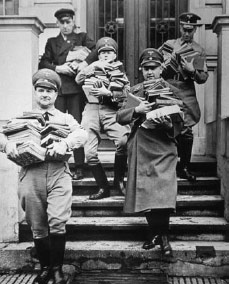The Boy Who Went to War (30 page)
Read The Boy Who Went to War Online
Authors: Giles Milton

Reiner, Gunhild, Erwin and Marie Charlotte in the dining room. The house in Eutingen was filled with beautiful furniture.
Â
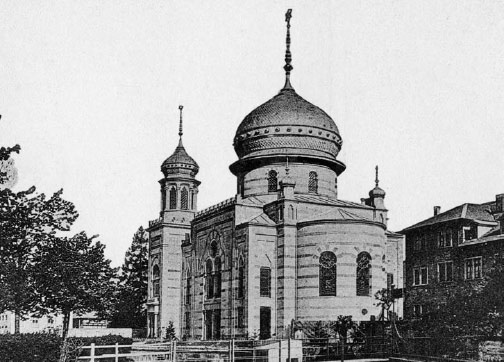
Pforzheim's reformed synagogue was the principal meeting place for the town's large Jewish population. It was attacked and seriously damaged in November 1938.
Â
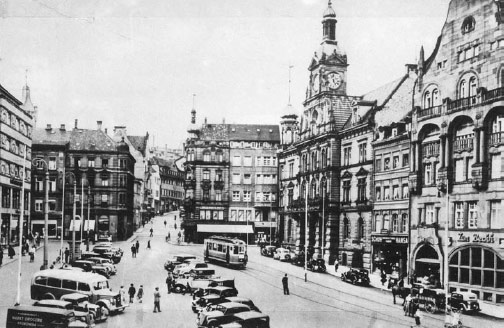
The Marktplatz (or market square) in central Pforzheim. It was here, in 1933, that the town's Nazi authorities staged a public burning of books deemed un-German.
Â
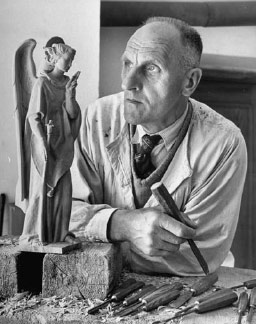
Wolfram's wood-sculpting tutor in Oberammergau, Johann Georg Lang. Wolfram became good friends with Lang's nephew, Werner, when they served together in a communications team in Normandy.
Â
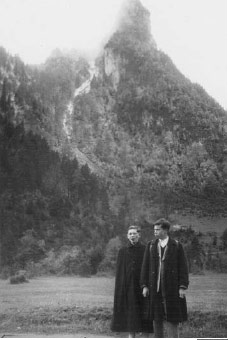
Wolfram, on the right of the picture, greatly enjoyed his time in Oberammergau. He was infuriated when he was conscripted into the Reich Labour Service.
Â
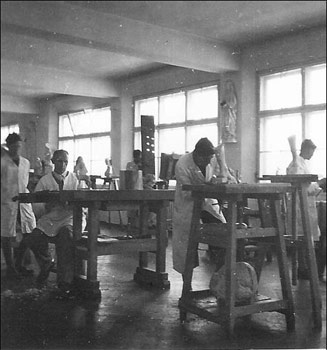
The studio in Oberammergau. Wolfram excelled at his studies and was one of the best students in his year. He returned there after the war; it was the beginning of a lifetime's creativity.
Â
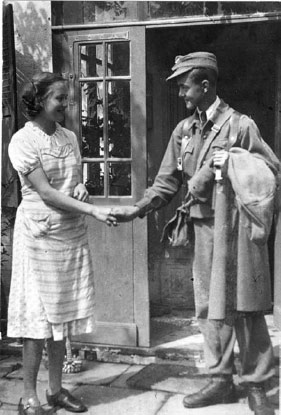
A youthful Peter Rodi says farewell to his sister, Ev-Marie, as he begins his obligatory service in the heimatflak, or home defence, the first inevitable step towards military conscription.
Â

Wolfram on leave in February 1944, his final holiday before invasionstag (or D-Day). It was the last time his parents saw him for more than two years.
Â
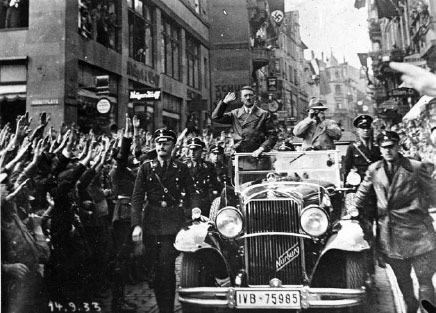
Adolf Hitler visits Pforzheim and Eutingen, en route to the fire-damaged village of Ãschelbronn, in September 1933. The Aïchele family were criticised by neighbours for declining to join the cheering crowds.
Â
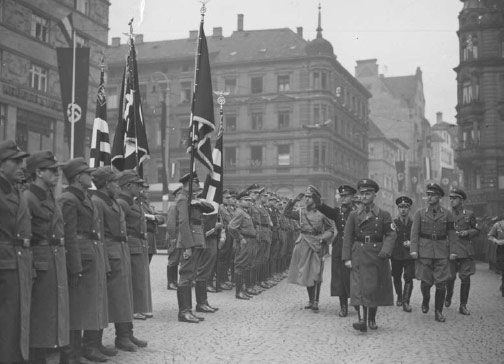
The Nazi leader of Baden, Robert Wagner, inspects a rally in the market square of Pforzheim, November 1934. Wagner was one of the most fanatical regional leaders.
Â
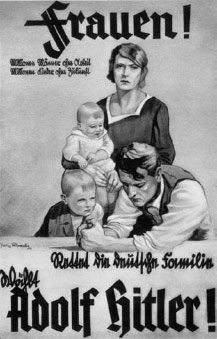
Election poster, 1932. Women were instructed to vote for Hitler. Wolfram saw posters like this all over Pforzheim.
Â
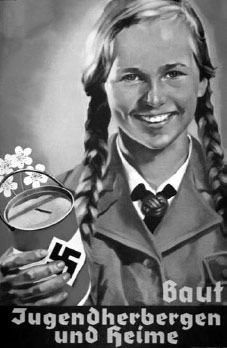
Poster celebrating the League of German Girls â the female branch of the Hitler Youth. Girls went from door to door collecting money, in this case for âyouth hostels and homes.'
Â
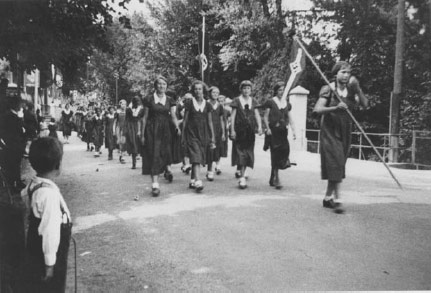
A 1933 street march of the League of German Girls in Hornburg, near Pforzheim.
Â
